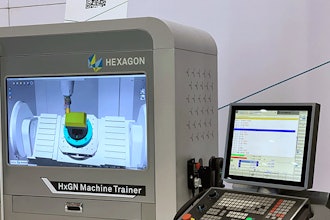The motor may be the heart of any HVAC system, but it is useless without quality capacitors which, like a car battery, keep the motor and the system running properly. How much do you understand about the capacitors’ critical function in the HVAC system?
This article will help you understand some of the industry standards set for capacitor quality, safety, and performance and will give you insight into selecting capacitors on-the-job.
What Capacitors Do
Almost every motor is furnished with either a start capacitor, a run capacitor, or both.
The start capacitor is connected into the motor’s electrical circuit at rest. It gives the motor an initial “push” on start-up, briefly increasing its starting torque and allowing the motor to be cycled on and off quickly. A typical start capacitor rating ranges from 25 µF up to 1,400 µF and 110 Vac to 330 Vac.
Once the motor reaches a specific speed, the start capacitor is disconnected from the winding circuit by a switch (or relay). If the motor drops below that speed, the capacitor will be switched back into the electrical circuit to bring the motor to the speed required.
Designed for continuous duty, the run capacitor always remains energized and connected in the motor’s electrical circuit. A typical run capacitor rating ranges from 2 µF to 80 µF and is either rated at 370 Vac or 440 Vac.
A properly sized run capacitor will increase the efficiency of the motor operation by providing the proper “phase angle” between voltage and current to create the rotational electrical field needed by the motor.
Proper Fitting/Substitution of Capacitors
How important is it to match the capacitance rating specified by the motor? In short, it’s very important -- even critical. In order to ensure the proper motor operation that the manufacturer designed it for, and to prevent damage to the motor, always use the exact same nominal rating of capacitance specified by the motor nameplate.
There is always a tolerance level on the microfarad (µF) rating. A typical tolerance on the capacitance of a motor run capacitor for HVAC applications is +/-6%. With this being said, that means that a 40 µF capacitor can rate from 37.6 to 42.4 µF and still be considered a passing capacitor.
When engineers design motors, they take into consideration this type of tolerance range. They specify the nominal (40 µF) rating along with a tolerance (+/-6%) to make sure that if the capacitor is to be replaced, the motor will provide the same performance that it was designed for.
Given the explanation above for the tolerance ranges, it is not suggested to use a 35 µF in place of a 40 µF.
40 µF ±6% = 37.6 to 42.4 µF 35 µF ±6% = 32.9 to 37.1 µF
As you can see, the high side of the 35 µF capacitance tolerance (37.1 µF) does not meet the low side of the capacitance tolerance of the 40 µF (37.6 µF) capacitor you are trying to replace it with. This also is the same for 5 µF and the 4 µF capacitors.
5 µF ±6% = 4.7 to 5.3 µF 4 µF ±6% = 3.76 to 4.24 µF
Using improperly sized capacitors can have a variety of detrimental effects on the motor. If the capacitor’s µF rating is less than the motor was designed for, the motor winding current will be too high. If the capacitor’s µF rating is higher than the motor was designed for, the motor winding current will be too low. Either scenario can lead to one or more of the following:
- Reduced motor speeds
- reduces system airflow/cooling
- increases system noise
- Temperature increase
- causes bearing wear and lubrication loss
- results in insulation breakdown
- increases noise
- Lower motor efficiency
- increases energy consumption
- reduces system and motor life
- Improper equipment operation
- results in improper cycling
- increased noise
- stresses other components
Motors are designed with a specific, nominal rating and tolerance.
If anything is outside that rating, the motor will run either faster or slower. Either way, the end result will be that the machine will not work properly, and the motor, capacitor, or any other component in the machine will receive additional stress that will cause damage, make noise, and require repair.
There have also been questions about what voltage to use when replacing capacitors. The rule of thumb is to always use greater than or equal to the voltage rating that is required by the motor. The voltage required is always stated on the motor name plate. NEVER use a lower voltage than required because it lowers the life of the capacitor exponentially. Using a lower voltage rated capacitor will not damage the system, but it will accelerate the capacitor’s end of life.
The voltage rating is the working voltage for the capacitor to reach 60,000 applied hours. If the heating or air conditioning unit increases voltage to the capacitor (for example: the capacitor is rated for 370 Vac, and is seeing 440 Vac from the unit), then the life of the capacitor will be lowered significantly. On the reverse side, if the heating or air conditioning unit is decreasing the voltage to the capacitor (for example: the capacitor is rated for 440 Vac, but is seeing 370 Vac from the unit), then the life of the capacitor is increased.
Even though a capacitor is an inexpensive component, installing the wrong size can have a dramatic impact on an entire system!
Industry Standards
So the question is, how does one know which capacitor has the quality and reliability that the motor manufacturers require without having to place capacitors in the actual HVAC unit for years and years and see if they perform?
There are various tools to ensure good capacitor quality and those are electrical and mechanical tests outlined in several capacitor industry standards. For long term reliability, the main and only tool is Highly Accelerated Life Testing (HALT). Many industry standards are out in the marketplace today, the main ones being:
- Tecumseh H-115
- IEC-60252-1
- EIA-456-A
Increasing demand for quality capacitors has been seen in the marketplace over the past several years. It seems that many manufacturers have cut corners on material quality and manufacturing processes so that, even though capacitors test well off the shelf, they don’t last more than 6 to 12 months in the field. Obviously, with cheaper materials and the elimination of some manufacturing processes, capacitor price has dropped to very low levels. Hand-in-hand with these lower prices, the market has also seen capacitors with extremely low field life.
The keys to a quality capacitor, aside from using quality materials in production, are the capacitor design, quality control systems, and performance testing throughout the production process in order to manufacture a capacitor that will pass the HALT testing. Most if not all capacitors will test the same off the shelf, but over the life of the capacitor, you will see drastic changes from one supplier to the next. This is where the industry standards come into play.
Tecumseh H-115
The Tecumseh H-115 was one of the first attempts at standardizing testing criteria for film capacitors. This standard was and still is mainly used in the U.S. and only applies to capacitor motor run applications. This standard includes a reliability test with two acceleration factors that include applied voltage and applied temperature.
Testing Conditions:
- Number of Capacitors Tested: 12 units
- Applied Voltage: 126% of rated voltage
- Applied Temperature: 80ºC (motor run capacitor is typically rated at 70ºC)
- Test Time (Hours): 500 hours
- Life Simulation (Hours): 60,000 hours
Considered Failures:
- Microfarad (µF) Loss: greater than 5%
- Dissipation Factor Gain: Does not discuss
- Failures Allowed: 1 unit out of 12 units
IEC-60252-1
The IEC-60252-1, created by the International Electrotechnical Commission (IEC), was and still is mainly used in Europe and Asia Pacific. As did the Tecumseh H-115, this standard also only applies to capacitor motor run applications. This standard uses only one acceleration factor (applied voltage) for the reliability test.
In this standard, different class ratings specify different field life for capacitors. The different class ratings depend on the amount of test hours that a capacitor goes through.
- Class A specifies an applied life of 30,000 hours
- Class B specifies an applied life of 10,000 hours
- Class C specifies an applied life of 3,000 hours
- Class D specifies an applied life of 1,000 hours
This article focuses only on the Class B specification of the IEC-60252-1 standard.
Testing Conditions for Class B specification:
- Number of Capacitors Tested: Does not specify
- Applied Voltage: 125% of rated voltage
- Applied Temperature: 70ºC (motor run capacitor is typically rated at 70ºC)
- Test Time (Hours): 2,000 hours
- Life Simulation (Hours): 10,000 hours
Considered Failures:
- Microfarad (µF) Loss: greater than 3%
- Dissipation Factor Gain: Does not discuss
- Failures Allowed: To be determined between customer and supplier
EIA-456-A
The EIA-456-A, created by the Electronics Industries Alliance (EIA), was and still is mainly used in the U.S. The EIA took both of the above mentioned standards and improved on them by publishing an all-encompassing standard for metallized film capacitors for ac applications.
It not only covers motor run applications, but also includes the capacitors used in high intensity discharge lighting applications and general purpose applications such as power supplies and power factor correction banks.
Testing Conditions:
- Number of Capacitors Tested: 12 units
- Applied Voltage: 125% of rated voltage
- Applied Temperature: +10ºC over rated max operating temperature
- Test Time (Hours): 2,000 hours
- Life Simulation (Hours): 60,000 hours
Considered Failures:
- Microfarad (µF) Loss: greater than 3%
- Dissipation Factor Gain: greater than 0.15%
- Failures Allowed: To be determined between customer and supplier
When comparing these three standards, the EIA-456-A is the toughest and most thorough. It is also the basis for many, if not most, of the HVAC original equipment manufacturers (OEM) reliability standards for capacitors.
Many capacitor manufacturers state that they have a 60,000 hour capacitor, but the real question is which test has been applied to their products? There is a four times factor differential when comparing the Tecumseh H-115 (500 hours of test time) versus the EIA-456-A (2,000 hours of test time).
Since the testing conditions of both the Tecumseh H-115 and the EIA-456-A are the same, one can see that 500 test hours on the EIA-456-A scale is equal to roughly 15,000 applied hours (refer to Table 5). The Tecumseh H-115 applied hours is very similar to the IEC-60252-1 Class B standard of 10,000 applied hours.
In the U.S., the standard is 5,000 estimated applied hours; thus, you can assume that the EIA-456-A standard, which specifies 60,000 applied hours for a capacitor, estimates that a capacitor will last roughly 10 to 12 years, while the Tecumseh H-115 estimates that a capacitor will last only 2 to 3 years since it compares to 15,000 applied hours instead of the 60,000 hours.
Are You Getting What You Paid For?
This has been a lot of detail, but hopefully it has given you a better understanding of capacitor ratings and standards used in the HVAC industry.
The key thing to remember is that all capacitors are going to test well out of the box, but it’s the lifespan of the capacitor that matters. The recommendation is to do your homework before purchasing capacitor products. This can save you money and headaches down the road.
Question the manufacturers about how their products compare to the EIA-456-A industry standard. Do not be afraid to ask the manufacturers for their capabilities for reliability testing. Any reputable manufacturer will be able to discuss this with you. From this, you will be able to assess the quality of the capacitor product yourself. Saving a few dollars on capacitors may end up costing you hundreds in the long run, so it is important that you understand what you are getting.
Reprinted with permission by RSES Journal























